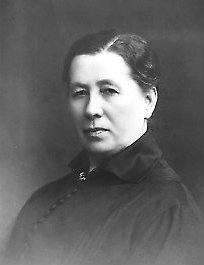 Miina Sillanpää, one of 19 Women elected to the Finnish Parliament in 1907 and the first female minister of state in Finland (1926)
Miina Sillanpää, one of 19 Women elected to the Finnish Parliament in 1907 and the first female minister of state in Finland (1926) As a result of the 1907 parliamentary elections, Finland's voters elected 19 women as the first female members of a representative parliament. This was one of many self-governing actions in the Russian autonomous province that led to conflict with the Russian governor of Finland, ultimately leading to the creation of the Finnish nation in 1917. Miina Sillanpää, who was one of the women elected to in 1907, became Finland's first female government minister in 1926.
The election followed the parliamentary reform of 1906 which replaced the Diet of Finland, which was based on the Estates and had its institutional roots in the period of Swedish reign, with a modern unicameral parliament of 200 MPs. The reform was agreed upon after a general strike in Finland in 1905 during which demands for a parliamentary reform arose especially among the Socialists. This coincided with similar development in Russia which too saw a general strike and, after the Russo-Japanese War, the birth of a new institution, the Duma. This background explains why Emperor Nicholas II of Russia allowed the parliamentary reform in Finland.
 RSS Feed
RSS Feed